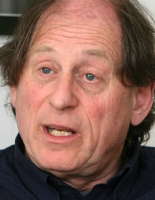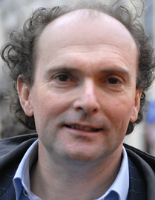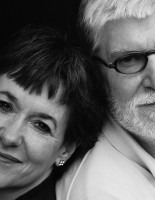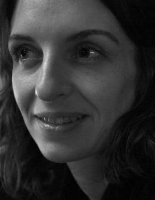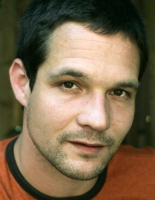Kai Kang, Journalist China Reading Weekly
The walking Dutch and the flying Chinese
Since 2006, I began writing about the Netherlands’ performance at the Beijing International Book Fair (BIBF) for China Reading Weekly, my first article entitled “Dutch knocking on the door of Chinese book market.”
If Dutch literature could shine like Dutch football, the Chinese publishers would line up to knock their doors.
In 2007, I wrote another piece, “Dutch found their way to Beijing”:
“The Foundation for the Production and Translation of Dutch Literature [NLPVF, now the Dutch Foundation for Literature] has only a five or six square meters stall. Facing the vast, almost 1,000 square meters Germany exhibition area, the Dutch territory looked like more small and narrow. Once someone gave a speech, the audience had to reclaim more lands from the sea, putting their chairs into the aisle, or went into the ocean, standing and listening from outside.
“It seems there are some cultural geographical meanings in it: small country vs. big county, small language vs. big language. However, facing their gigantic neighbor, Henk Pröpper, the managing director of NLPVF, claimed they would seek the same status as Germans in a few years: Guest of Honor at BIBF.”
He did. The Netherlands became this year’s Guest of Honor, and the Dutch pavilion will be 1,500 square meters, not only much higher than the Germans’, but maybe also the largest national pavilion in 18 years of history of the BIBF. A month ago, I wrote a feature about the Dutch literature and their preparations for the fair, which was published in Nanfang Dushibao, aka Southern Metropolis Daily, and the editor gave it a new title: “The flying Dutchmen are landing in China.” I like this one, literally; I also like Wagner, even though it was a miserable story about a phantom ship.
Over the past decade, the Dutch books poured into China at an unprecedented rate, but in fact, only a hundred titles were published, including fiction and non-fiction. Most Chinese readers know very little about contemporary Dutch literature. Robert van Gulik, author of the Judge Dee Mysteries, is still our most familiar Dutch novelist, though Erasmus, Spinoza and Huizinga are very popular among some Chinese intellectuals.
I thought that the Netherlands would need an idol writer, a star, such as Orhan Pamuk for Turkey, or Stieg Larsson for Sweden or even the whole of Scandinavia. In the market, writers should be like football stars. We knew everything about the Dutch Big Three on the pitch - Marco van Basten, Ruud Gullit and Frank Rijkaard, but know little about the Big Three on literary field - Willem Frederik Hermans, Gerard Reve and Harry Mulisch. If Dutch literature could shine like Dutch football, the Chinese publishers would line up to knock their doors.
But how can you produce a literary star, especially when stardom doesn’t really seem characteristic for the “Dutch style” at all? But it almost became a system in China’s publishing industry; Chinese readers also like to buy books in this way. Sometimes in the market, this method would become ridiculous and shameless. On the cover of Chinese version of Siegfried Lenz’s Deutschstunde, you can find a big pink slogan: “A easy-to-be-read classic which S.H.E. carried with them!” Do you know S.H.E.? It is a Taiwanese girl group, whose biggest hit is the song “Super Star.”
The Netherlands was one of the first modern European countries getting in touch with China. At the beginning of the 17th century, following the Portuguese, the Dutch arrived at China’s southern coast. They were officially called “Red Hair,” as a Chinese history book said: “Their cloths are red, and their eyebrow, their hair, even their beard, are all red.” It’s not strange. Meanwhile, Prussia was called “Single Eagle State,” Austria was “Double Eagles State,” Denmark was “Yellow Flag State,” and Sweden was “Blue Flag State.” After a hundred years, the United States would be called “Mottled Flag State.” The Dutch briefly occupied Taiwan. In 1921, Henk Sneevliet, a Dutch communist came to China to help founding the Communist Party. During the first three decades of Communist China, Dutch documentary filmmaker Joris Ivens was one of the few Westerners welcomed officially as the “old friend of Chinese people.” In the 1960s, a lot of Chinese fled out of Indonesia, returning to the mainland China, from which the first generation of Chinese translators of Dutch literature would emerge.
Now, the Dutch writers who first visit Beijing would easily discover many differences between Amsterdam and this new metropolis: old houses vs. skyscrapers, bicycles vs. cars, canals vs. highways, quiet vs. noise, moderation vs. fearlessness, slowness vs. unlimited speed, as if the Dutch are walking on the ground, and Chinese flying in the air. But they can also see the same things: open hearts, warm smiles and hospitalities to foreigners.
Some people would think the Dutch style is our past, and some would think this should be our tomorrow. I do not know. In any case, Chinese people will eventually find their own way toward the future. I only hope, in this process, the Dutch style can and will always be in our field of vision. Maybe the Dutch publishers won’t hope for their Chinese counterparts to print “S.H.E.’s favorite” on the covers of Cees Nooteboom’s or Harry Mulisch’s books.
